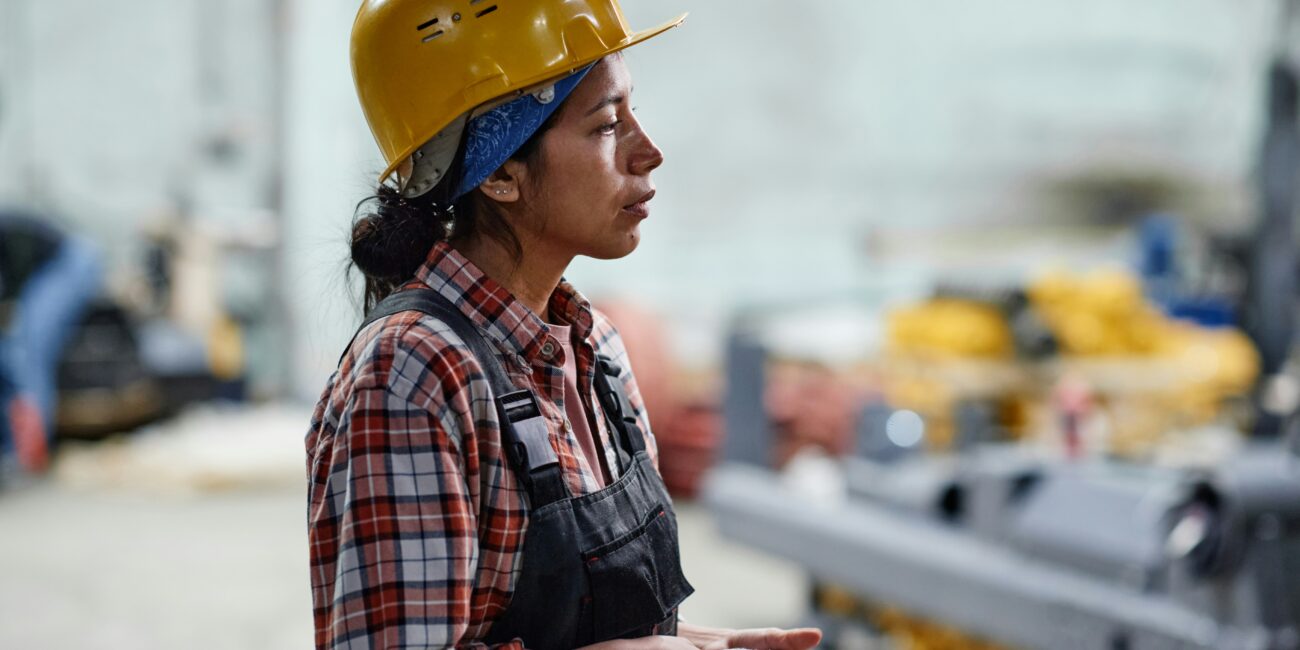As the world faces unprecedented challenges in urbanization, climate change, and economic inequality, the future of infrastructure and development lies in innovation, sustainability, and inclusivity. Women, who make up nearly half the global workforce, are increasingly stepping into roles that shape the built environment. However, their contributions remain underrepresented and undervalued in industries like construction, engineering, and urban planning.
A civil engineer working on urban sustainability shared her experience:
“Every time I design a green building, I think about the people who will live and work there. It’s not just about the structure—it’s about creating spaces that uplift communities. Women have a unique ability to see infrastructure as a means to empower, not just to build.”
Why Women Matter in Infrastructure and Development
Diversity in infrastructure development is not just a moral imperative—it’s a strategic one. Research shows that gender-diverse teams are more innovative and better at addressing complex challenges. Infrastructure projects benefit from perspectives that balance technical expertise with social impact, a balance that women often bring to the table.
For instance, studies have revealed that women in leadership roles prioritize sustainable solutions and community-focused outcomes. These qualities are critical in designing infrastructure that adapts to climate change, supports underserved populations, and fosters economic growth.
Moreover, representation matters. When women lead or contribute to infrastructure projects, they inspire future generations to envision themselves in these roles, creating a ripple effect of empowerment across industries.
Barriers Holding Women Back in Infrastructure Roles
Gender Stereotypes and Cultural Bias
Infrastructure and construction industries have long been perceived as male-dominated. Women entering these fields often face skepticism about their capabilities. This bias not only discourages women from pursuing careers in these sectors but also limits their potential contributions.
“I had to work twice as hard to prove I could handle the physical and technical challenges of this job,” shared a female construction manager.
Limited Access to Education and Training
Globally, only 14% of civil engineering degrees are awarded to women (UNESCO, 2023). This lack of representation in education translates to fewer women entering and excelling in the workforce. Without targeted efforts to recruit and support women in infrastructure-related fields, the gender gap will persist.
Workplace Challenges
Even when women overcome barriers to entry, they often encounter hostile or unsupportive work environments. Harassment, unequal pay, and exclusion from leadership opportunities are prevalent, leading to higher turnover rates among women in these industries.
Lack of Role Models and Mentorship
The scarcity of visible female leaders in infrastructure and development creates a feedback loop of underrepresentation. Young women lack role models who can inspire and guide them, making it harder to envision and pursue long-term careers in these fields.
Steps Toward Equity in Infrastructure and Development
Promoting STEM Education for Girls
Early exposure to STEM (Science, Technology, Engineering, and Mathematics) subjects is crucial for fostering interest in infrastructure careers. Programs that provide hands-on experiences—such as designing bridges, studying sustainable energy, or engaging in urban planning challenges—can ignite a passion for these fields.
Expanding Training and Career Pathways
Organizations must actively recruit women into infrastructure roles by offering scholarships, apprenticeships, and targeted training programs. Flexible schedules and family-friendly policies can also help retain women in the workforce.
Building Inclusive Work Environments
Companies must commit to creating workplaces where women feel valued and supported. This includes implementing zero-tolerance policies for harassment, ensuring pay equity, and offering mentorship programs that connect women with industry leaders.
Showcasing Women’s Contributions
Highlighting the achievements of women in infrastructure can inspire others to follow in their footsteps. Industry awards, media campaigns, and conferences that celebrate women’s impact can help shift cultural perceptions and encourage more women to pursue these careers.
The Role of Advocacy Organizations
Nonprofits and advocacy groups play a critical role in breaking down barriers for women in infrastructure. These organizations provide resources, training, and support networks while advocating for systemic changes that promote gender diversity. They also collaborate with governments and industries to ensure policies align with the needs of women.
A Vision for the Future
The future of infrastructure and development is inclusive, innovative, and sustainable. Women’s involvement in these fields is not just beneficial—it’s essential. Their unique perspectives and skills can transform how infrastructure is designed, built, and managed, ensuring that it serves the needs of diverse communities.
As one female urban planner remarked:
“Infrastructure isn’t just about roads and buildings. It’s about creating opportunities and connections. When women are involved, we build with compassion and purpose.”
At the Global Girls Development Foundation (GGDF), we are committed to empowering women to lead the future of infrastructure and development. By fostering education, mentorship, and advocacy, we aim to dismantle barriers and unlock the full potential of women in these critical fields.
The time to act is now. Together, we can create a future where infrastructure not only supports progress but also reflects the values of equity, sustainability, and inclusion. Let’s build this future—brick by brick, vision by vision. Connect with us to work together!
References
Deloitte & Automotive News. (2020). Diversity, Equity, and Inclusion in Automotive Study
McKinsey & Company. (2021). Diversity Wins: How Inclusion Matters
UNESCO. (2023). Women in Engineering: Global Statistics
National Center for Women & Information Technology. (2022). Women in Technical Fields: Barriers and Opportunities
stronger
together
Whether you’re an individual, a company, a community, or an educational institution, there’s a place for you here at GGDF.
Join Us



